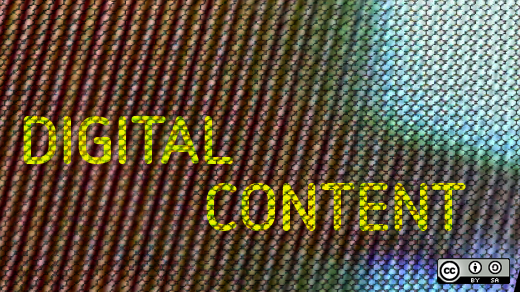So, unless you had your head in the sand, you probably noticed HP’s Touchpad tablet computers flying off the shelves of stores after the company slashed the price to $99 ($149 for the 32GB model) and announced that it was discontinuing the product line.
My first thought was, “Wow, this is the ‘$100 laptop’ for American buyers…” A device that could change the way Americans interact with digital media, just as the One Laptop Per Child project aimed to do for children with minimal computer access in developing countries.
There’s a little problem, though: there are other $100 tablets on the market (they’re pretty much crap, unlike the Touchpad), and HP’s cost an estimated $300 per unit to make. Even a child could tell you that selling something at a loss is no way to make money.
But let’s set aside the problem of economics for now. Instead, let’s consider the inroads that such a product could make for digital magazines, newspapers, and other content.
An app-store model
The key to iTunes’ success (and consequently, the iPad and iPhone’s) has been the way it has made purchasing and consuming digital content (from apps to music) so easy. The barrier to entry for consumers is low: click the $0.99 button, enter your password, and within seconds you’ll be happily flinging Angry Birds or bopping to the latest Black-Eyed Peas song.
The other key to any app store’s success appears to be sheer size: HP’s app store launched with a mere 6,000 apps—a weak shopping catalog compared to the hundreds of thousands selections for Android and Apple.
The technology for visually rich digital content (magazines, cookbooks, newspapers…) is ready. So is the technology for vast viral marketing, thanks to social networks. Check out this demo of Wired’s digital magazine to see how it all can come together:
The missing link
The real breakthrough that no app store has made, however, is one that HP happened to stumble over in its rush to liquidate the tablets: there is no good quality, affordable device for bringing visually rich digital content into the hands of the average middle class American family.
We have our MP3 players and our smartphones. We have our laptops and our desktops. Quite a few of us even have our Nooks and Kindles. But most of us aren’t ready to drop $500 on a tablet when all of our other devices seem to cover everything it does.
Yet the tablet is ideal for that specific kind of content that’s less user-friendly to access on any of our other devices. But because we’re not yet accustomed to consuming this sort of content in large amounts—we’re still reading print publications, though less and less—tablets still fall in the category of “nice to have” for most of us, not “must have.”
That’s a huge missed opportunity for the failing print industry, because we need affordable, portable devices if we’re to consume their digital magazines and newspapers—and it’s passing up enormous potential for vibrant digital advertisements that we’d eagerly interact with. (Just look at the ones in the Wired video above!)
The time is now
I believe there’s no question that mainstream America is ready for the transition from print to digital. (And to avoid any nasty comments, let me just say that I’m sure the Canadians and Europeans reading this are just as eager for affordable tablets.)
This is a conclusion I’ve reached multiple times over the last year, as I have let my magazine subscriptions lapse—Who has time to read them? Who wants to throw away or store masses of glossy paper?—and my free weekly local newspaper languishes in my driveway. Meanwhile, I’m squinting to access the same content on my smartphone, or frustrated at how it competes with my paid work when I’m using my laptop during the week.
I know I’ll buy a decent tablet eventually. But in the meantime, advertisers and the media are missing out on lots of revenue from me, and I’m stuck in a black hole between digital and print. Consider this: I work in the tech industry. How much more could this be true for the device-savvy teens and college students who have come of age with the expectation that they’ll have this content at their fingertips and be able to share it with their friends via social networks?
There’s a second factor that’s made me realize how much the market needs this $99 tablet: Touch-screens are extremely intuitive for children, and as a result, they’re already primed to receive digital content in this way.
My 2 year old can turn on my iPod touch, unlock it, select her game of choice, toggle between apps, and play the games. No one taught her how to do this. She begged to have a turn to play Gina the Giraffe (granted, she thinks it’s a cow) when she saw her 4 year old brother playing. With all the stubbornness a two year old can muster, she refused to let anyone show her how to play—and instead kept touching (and watching others play) until she figured it out. The same has been true for a half-dozen other games. And just last weekend, I saw her demonstrate one finger motion to her grandfather, who was trying to figure out the interface.
From interactive preschool games to nature videos, these tiny tots are the next generation of consumers, and they’re already influencing buying decisions. (How exactly do you think Cut the Rope ended up on my husband’s Android phone?)
Getting from here to there
So it’s time to bring that economics problem back into the conversation. If the cost of a device is the only remaining barrier between your average person and the consumption of mass amounts of digital content, it seems reasonable to think there’s a business model that could overcome it. Grocery stores and even video game device manufacturers have mastered the art of the loss leader; perhaps there’s a place in the tablet market for a similar strategy.
Clearly open standards and open source operating systems like Android offer one way to lower costs and increase choice; but the loss leader model too often relies on vendor lock-in. (The Nintendo proposition: Buy our game system at a discount, and it will only play our games, which also won’t run on any other brand of system.)
Can you conceive of a better business model? What other barriers still exist for the transition from digital to print?






18 Comments